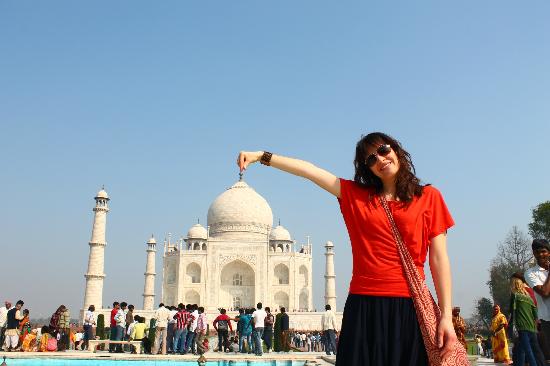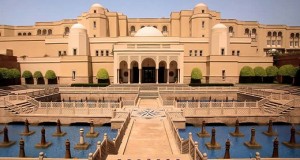Review Overview
2
Summary : The Taj Mahal stands on a raised marble platform, with a tall, narrow minaret at each corner.
The Taj is something to be seen at leisure, not rushed. Instead of bolting down to see it at close quarters, start with a general appreciation from the mammoth entrance gate: first the beautiful canals, fountains and tanks (sometimes with water in, sometimes not); next, the sweeping green lawns (minus the original fruit trees and gardens, but still pretty); then the two red-sandstone side buildings including the mosque; finally, the huge domed mausoleum in the centre. The Taj Mahal stands on a raised marble platform, with a tall, narrow minaret at each corner. The minarets were built to lean very slightly outwards, to save the tomb from damage should they ever topple. The huge bulbous dome atop the main structure is surrounded by four smaller domes. The four sides of the Taj are identical, and the building itself sites against a backdrop of empty sky, a conscious device producing the illusion of floating palace seemingly suspended in the air.
The approach to the mausoleum is via long paths separated by a long central watercourse, in which (when there is water) it is beautifully reflected. The illusion of perfection is maintained even when viewing the structure at close range. The walls and arches are elegantly engraved with screen and mosaic work, the exquisit tracery and carving more like lace than sculpture. Semi-precious stones have been: inlaid into the marble in incredibly precise patterns, a distinctive process of craftsmanship called pietra dura.
Inside the cool cenotaph chamber decorated with emeralds, jaspers, sapphires and other precious stones, a plain marble screen runs round the two dummy tombs off Shah Japan and Mumtaz (the real ones, to avoid looting, were placed in the darks : humid basement chamber below). The original gem-studded gold screen was replaced by the present plain one in 1642—because Shah Jahan didn’t want to encourage grave-robbers! But the Taj was a natural target for looters, and the real tombs below were stripped of all their gold and jewels by Jats from Bharatpur in 1754. The chamber itself has fine inlay work—mainly floral designs on red, greens , gold or black marble. The Cairene lamp hanging from the dome of the cenotaph was donated by Lord Curzon in 1909.
After exploring the mausoleum, stroll outside to view it at leisure from the cool, shaded gardens. It’s all been said before, but the Taj is quite unique—a rare masterpiece of perfect proportion, symmetrical construction and harmonious form. Blinding- white at noon, the stark Macrana marble mellows by dusk to a sultry orange-cream, only to adopt a deathly blue-white pallor at night. Nights of a full moon used to be a popular viewing time, but in 1985 security precautions caused the building to be closed after dark. There are plans to re-open it on moonlit nights but until that happens, the only way you’re going to see the Taj at night is to book a room at The Taj View Hotel directly overlooking it.
Midway along the western wall of the garden is the small Taj Museum with an interesting collection of Mughal items and 19th-century photographs of the Taj. For the time being, the Taj Mahal is open from sunrise to 7.30 pm only. Admission is Rs2, and last tickets are sold at 6.30 pm. Like all sites managed by the Archaeological Survey of India, it is free on a Friday. This, however, is the one day not to visit—delirious hordes of pilgrims and local tourists. If visiting during March/April,avoid daydreaming by the cenotaph entrance: the ceiling is full of hives, and the floor carpeted with dead honey-bees. Shoes aren’t allowed.





